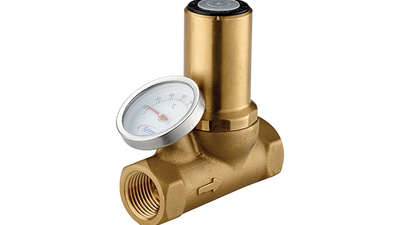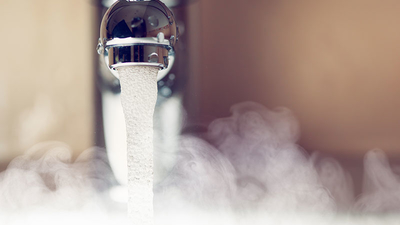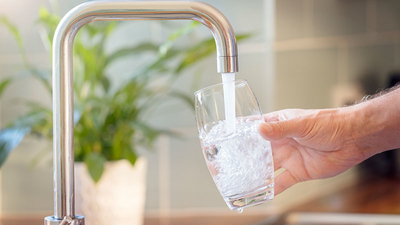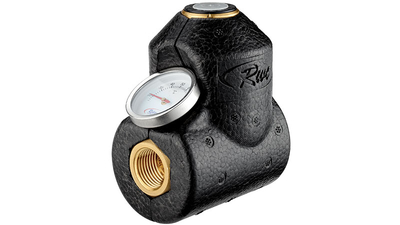Energy in the balance: How TBVs can improve energy efficiency

The UK has some huge targets when it comes to improving energy efficiency, with the government’s plan to achieve net zero emissions by 2050. While designing buildings with sustainability in mind is part of the challenge, the efficiency of even the best-designed buildings and heating systems can be undermined by incorrect product selection and installation. In our latest blog, we take a look at the important role of the humble and often under-sung Thermal Balancing Valve, better known as the TBV.
What does a Thermal Balancing Valve do?
Thermal balancing valves are designed for use in circulating hot water systems. They use a thermostatic element that automatically balances the hot water network and maintains a consistent temperature throughout the circuit, by adjusting the flow rate. Once the water temperature in the system rises to its set point at 65°C, the thermal balancing valve dynamically adjusts the flow to maintain a consistent temperature throughout the circuit. Water at higher temperatures is forced to other parts of the system that are operating at lower temperatures, balancing the temperature within the system.
How do TBVs improve energy efficiency?
Put simply, TBVs ensure that the system works efficiently in a balanced way, which means the boiler doesn’t need to be cranked up to a high temperature to ensure hot water is available at the furthest parts of the pipework. This reduces water wastage, and the energy needed to heat the water, all while improving customer experience.
In addition, if the system is thermally balanced, users can access hot water as soon as they open the tap. This means they don’t need to wait for hot water to reach the outlet, which leads to unnecessary water and energy wastage.

Additional benefits of balancing hot water systems
Preventing legionella: TBVs are an important component when it comes to safety. They prevent stagnation by continuously circulating the hot water, preventing the build-up of harmful bacteria such as Legionella.
Eliminating hot water spikes: As well as this, they eliminate hot spikes that can cause scalding (Thermostatic Mixing Valves are still required for complete protection against scalding). From a maintenance perspective, the elimination of hot spikes helps to prevent corrosion to other components over time, reducing maintenance intervals.

Installation and maintenance of TBVs: Best practice
Location, location, location: Thermal balancing valves should be installed on returning legs of the pipework to eliminate dead legs of uncirculated hot water. TBVs should not be placed on the return pipework closest to the boiler. Doing this means the boiler must work harder, because water does not get forced to areas with a lower temperature.
Safety in numbers: TBVs can be installed to a single or a group of outlets linked to the hot water network, for example, a group of basins. However, individual valves should be installed at every draw off area. For example, if there are 100 rooms in a hotel, a TBV should be installed for each room. This will ensure constant temperature across the circulating loop, no matter where you are in the building.
Maintenance is key: The piston and thermostat assembly of TBVs can accumulate dust over time, which can result in inadequate performance. Cleaning and maintenance is key to efficiency. RWC strongly advises that installers keep a record of service timelines, and only use WRAS approved products to clean these components.
Selecting the right TBV for the job
Getting the right tool for the job is vital to achieving the benefits highlighted in this article. Thermal Balancing Valves must be WRAS approved, automatically operated, with adjustable temperature settings from 40 – 65°c and include an integral disinfection function. They should also be able to be installed in any orientation and supplied with an insulation jacket, identification tag and have a removable thermometer that sits within a dry pocket, for easy repair and maintenance.

Time to balance cost and energy efficiency
TBVs play a crucial role in commercial hot water systems. A balanced system is instrumental in providing optimum performance, safeguarding the end-users, and realising energy efficiencies. RWC offers a selection of TBVs within its Reliance Valves range and is also on hand to provide technical support and best practice installation guidance to help simplify these jobs. For any technical queries, please get in touch with our specialists by clicking here.
Discover more
Visit Reliance Valves to learn more about our TBVs and other solutions by Reliance Valves.
